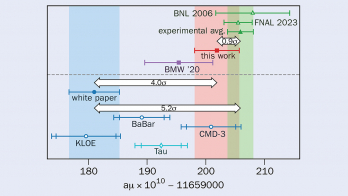By Pierre Van Baal
CRC Press
Also available as an e-book

Quantum field theory is a mature discipline. One of the key questions today is how to teach and organize this large body of information, which spans several decades and encompasses diverse physical applications that range from condensed-matter to nuclear and high-energy physics. Since the turn of the millennium, interested readers have witnessed progressive growth in publications on the subject. More often than not, the authors choose to edit their own notes extensively, with the purpose of presenting a whole series of lectures as a treatise.
Indeed, it is common to see books on quantum field theory of around 500 pages. Most of these publications give slightly different perspectives on the same subjects, but their treatments are often synoptic because they all refer to some of the classic presentations on field theory of the 20th century. The proliferation of books is at odds with the current practice where students are obliged to summarize a large number of different subjects through shorter texts, or even by systematic searches through various databases.
In this respect, A Course in Field Theory is a pleasant novelty that manages the impossible: a full course in field theory from a derivation of the Dirac equation to the standard electroweak theory in less than 200 pages. Moreover, the final chapter consists of a careful selection of assorted problems, which are original and either anticipate or detail some of the topics discussed in the bulk of the chapters.
Instead of building a treatise out of a collection of lecture notes, the author took the complementary approach and constructed a course out of a number of well-known and classic treatises. The result is fresh and useful. The essential parts of the 22 short chapters – each covering approximately one or two blackboard lectures – are cleverly set out: the more thorough calculations are simply quoted by spelling out, in great detail, the chapters and sections of the various classic books on field theory, where students can appreciate the real source of the various treatments that have propagated through the current scientific literature. Despite the book’s conciseness the mathematical approach is rigorous, and readers are never spoon-fed but encouraged to focus on the few essential themes of each lecture. The purpose is to induce specific reflections on many important applications that are often mentioned but not pedantically scrutinized. The ability to prioritize the various topics is wisely married with constant stimulus for the reader’s curiosity.
This book will be useful not only for masters-level students but will, I hope, be well received by teachers and practitioners in the field. At a time when PowerPoint dictates the rules of scientific communication between students and teachers (and vice versa), this course – including some minor typos – smells pleasantly of chalk and blackboard.








